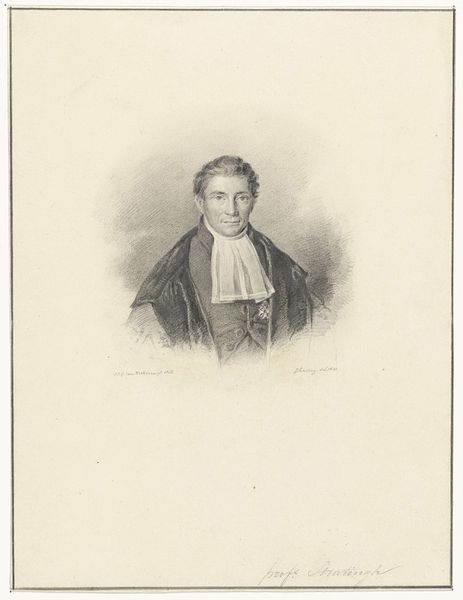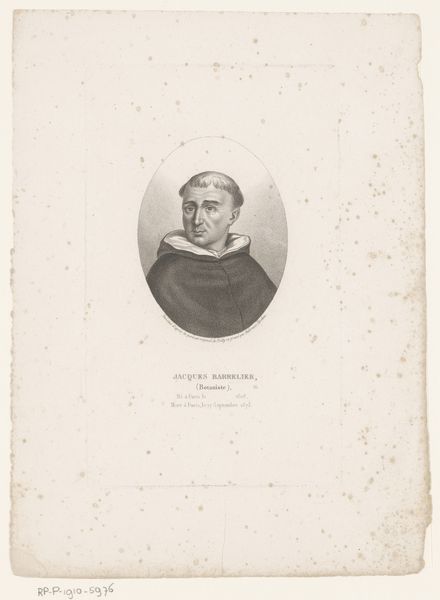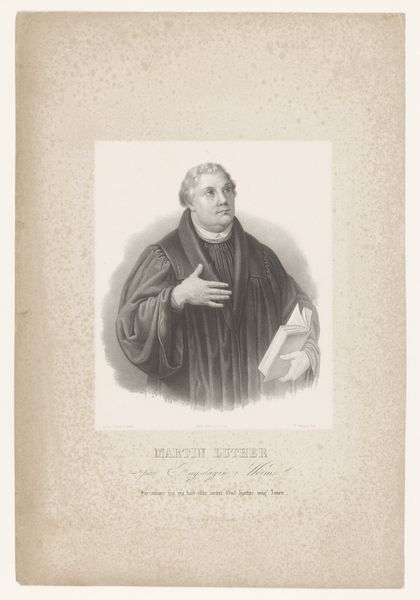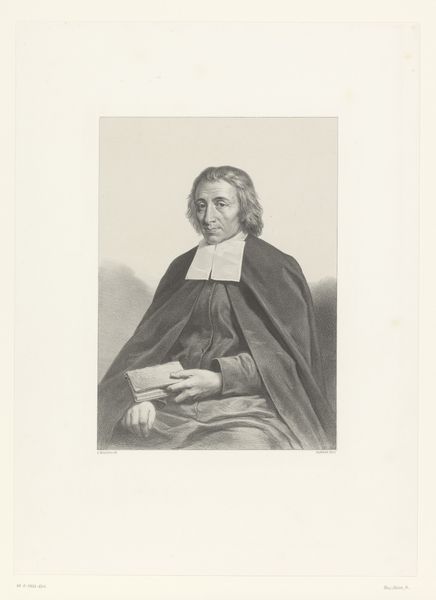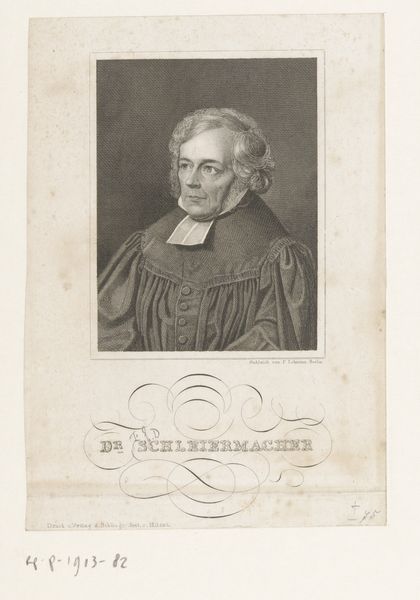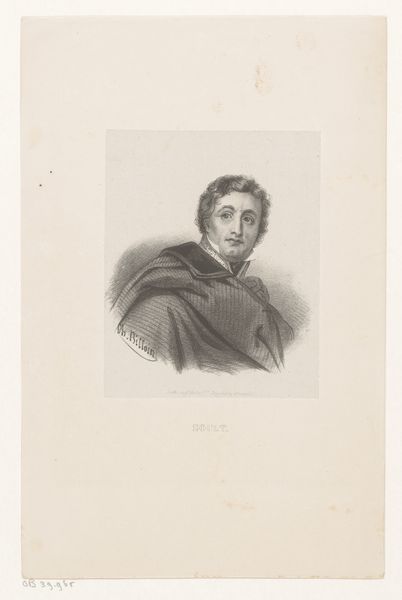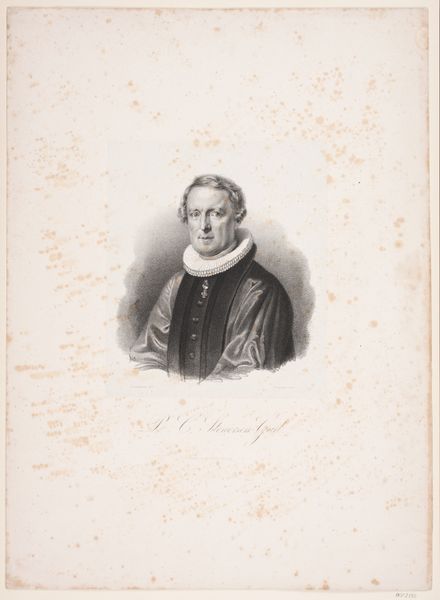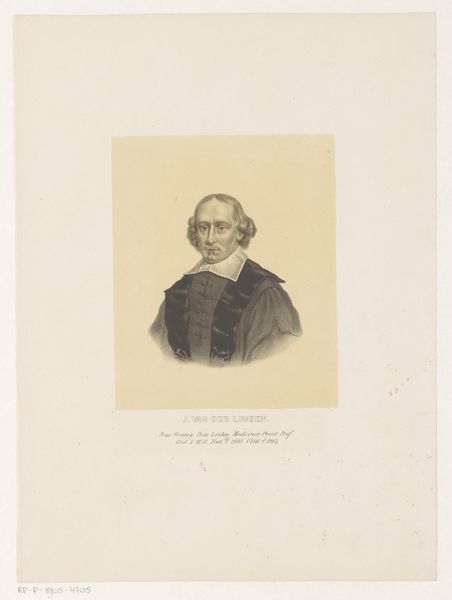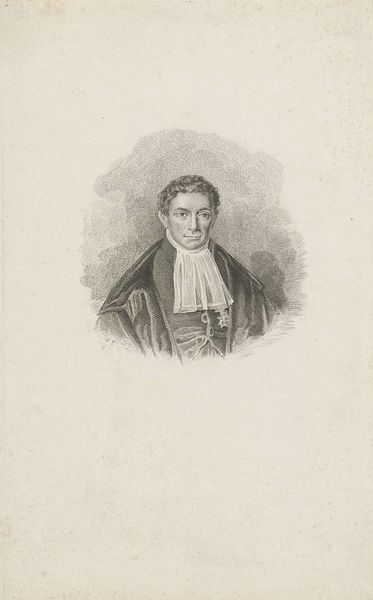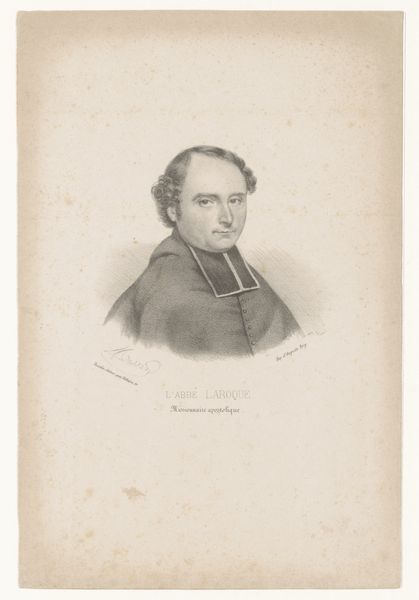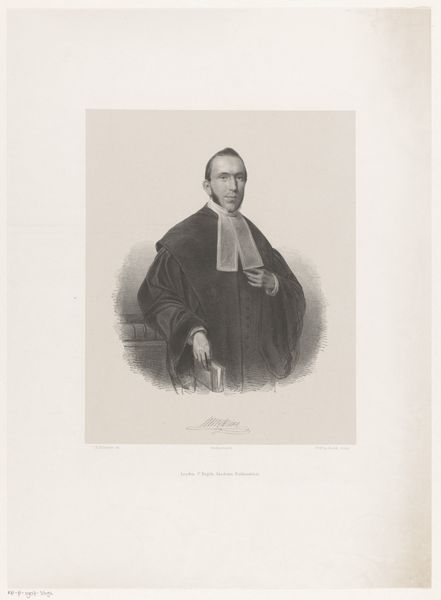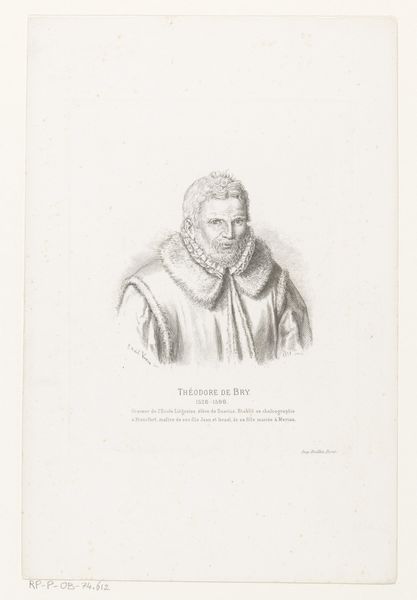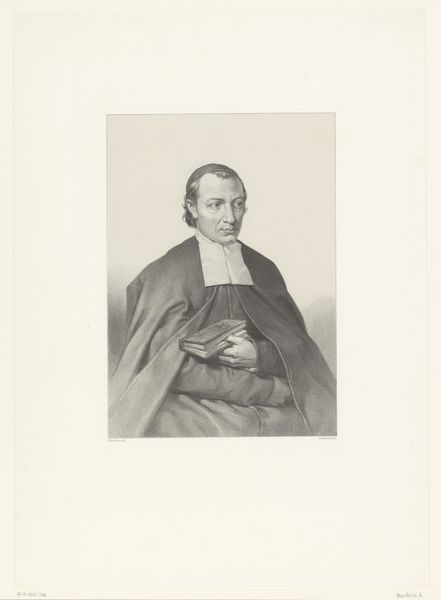
#
portrait
# print
#
academic-art
#
realism
Dimensions: height 435 mm, width 310 mm
Copyright: Rijks Museum: Open Domain
Curator: Standing before us, we see "Portret van Ludwig Carl Lentz," a print created sometime between 1851 and 1883 by Johan Hendrik Hoffmeister. What's your initial read on this image? Editor: Immediately, I’m drawn to the texture, or rather, the *impression* of texture created by the printmaking technique. You can almost feel the weight and drape of the sitter’s robes, despite the clear economy of means. It really emphasizes materiality and process. Curator: It certainly does. The somber garb, paired with his clasped hands, lends Lentz an air of composed dignity, characteristic of depictions within the religious sphere. These symbols, such as his collar, visually communicate his role and authority, subtly reinforcing the power structures of the church in 19th-century society. Editor: Power definitely circulates, not just in the image but through its creation. Consider the labor involved: the engraver’s meticulous work translating flesh and fabric into a reproducible image, and the consumption of this print within a specific social context. Who owned this? How did they consume it? Curator: Good questions, highlighting that tangible aspect. Looking at Lentz, his steady gaze seems to project both certainty and, perhaps, a hint of melancholic contemplation. It almost prompts a psychological study of belief and identity in this man and the social world he inhabited. Editor: And what of the paper itself? The choice of a print allows for wider distribution and consumption. The social life of this object, from Hoffmeister's studio to, possibly, a widely circulated edition, contrasts sharply with, say, an oil painting destined for a single patron. Curator: Absolutely. The democratization of image dissemination has wide implications for cultural memory. Even today, this image persists, speaking not only of Lentz, but the broader 19th-century Protestant identity. Editor: Exactly. And thinking about this print, the means of production shapes not just how we perceive Lentz, but also how a particular social system reproduces its power through images. Curator: A poignant example of visual and social resonance, a delicate balance captured through skilled artistry. Editor: Indeed. This image is more than a simple portrait; it embodies a whole network of material processes, labor, and societal values embedded in a tangible artifact.
Comments
No comments
Be the first to comment and join the conversation on the ultimate creative platform.
